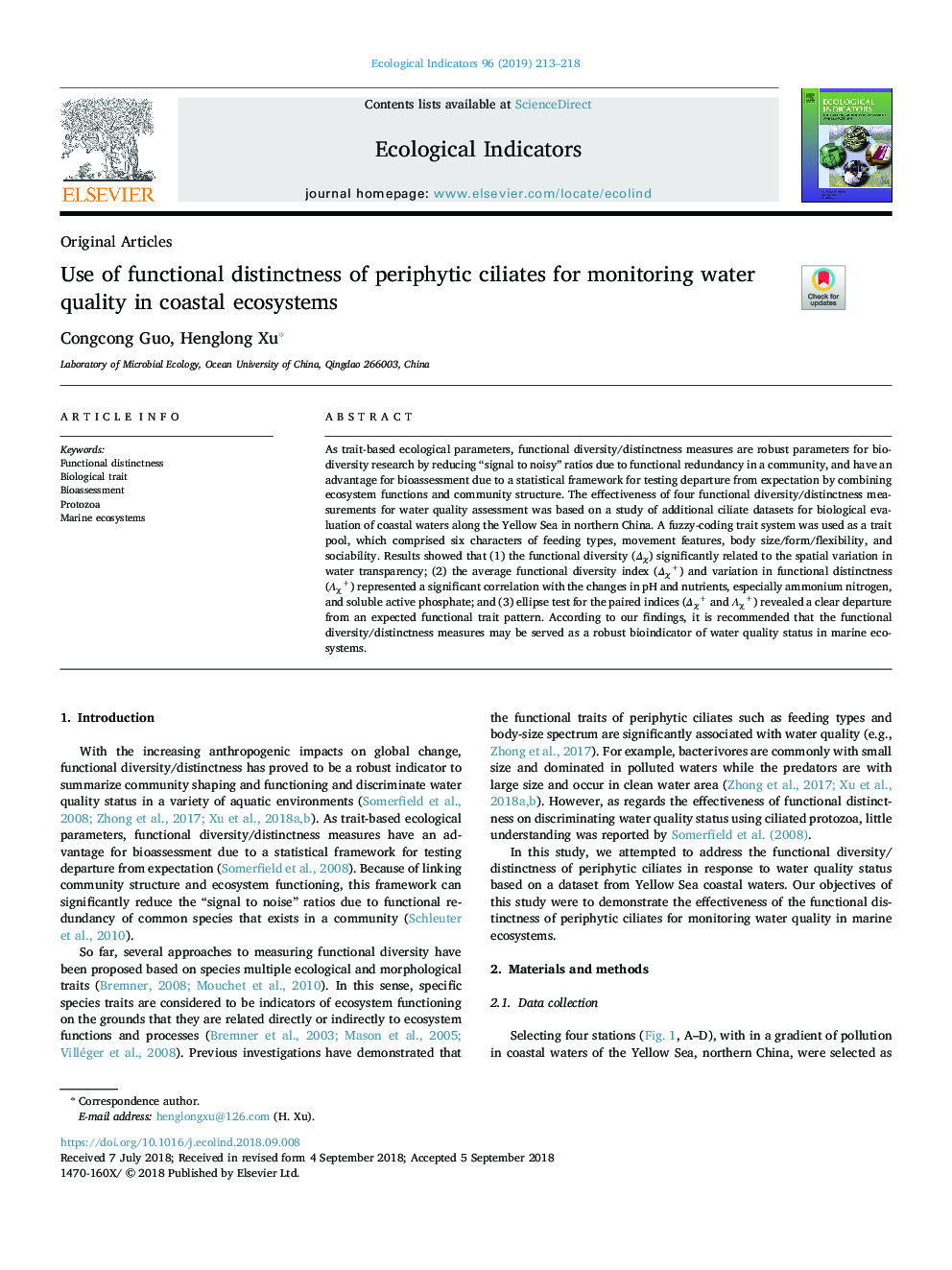| کد مقاله | کد نشریه | سال انتشار | مقاله انگلیسی | نسخه تمام متن |
|---|---|---|---|---|
| 10144217 | 1646298 | 2019 | 6 صفحه PDF | دانلود رایگان |
عنوان انگلیسی مقاله ISI
Use of functional distinctness of periphytic ciliates for monitoring water quality in coastal ecosystems
ترجمه فارسی عنوان
استفاده از ویژگی های عملکردی سیریت های پرپیکت برای نظارت بر کیفیت آب در اکوسیستم های ساحلی
دانلود مقاله + سفارش ترجمه
دانلود مقاله ISI انگلیسی
رایگان برای ایرانیان
کلمات کلیدی
تعاریف کارکردی، صفات زیستی، ارزیابی بیولوژیک، قاعدگی، اکوسیستم های دریایی،
موضوعات مرتبط
علوم زیستی و بیوفناوری
علوم کشاورزی و بیولوژیک
بوم شناسی، تکامل، رفتار و سامانه شناسی
چکیده انگلیسی
As trait-based ecological parameters, functional diversity/distinctness measures are robust parameters for biodiversity research by reducing “signal to noisy” ratios due to functional redundancy in a community, and have an advantage for bioassessment due to a statistical framework for testing departure from expectation by combining ecosystem functions and community structure. The effectiveness of four functional diversity/distinctness measurements for water quality assessment was based on a study of additional ciliate datasets for biological evaluation of coastal waters along the Yellow Sea in northern China. A fuzzy-coding trait system was used as a trait pool, which comprised six characters of feeding types, movement features, body size/form/flexibility, and sociability. Results showed that (1) the functional diversity (ÎÏ) significantly related to the spatial variation in water transparency; (2) the average functional diversity index (ÎÏ+) and variation in functional distinctness (ÎÏ+) represented a significant correlation with the changes in pH and nutrients, especially ammonium nitrogen, and soluble active phosphate; and (3) ellipse test for the paired indices (ÎÏ+ and ÎÏ+) revealed a clear departure from an expected functional trait pattern. According to our findings, it is recommended that the functional diversity/distinctness measures may be served as a robust bioindicator of water quality status in marine ecosystems.
ناشر
Database: Elsevier - ScienceDirect (ساینس دایرکت)
Journal: Ecological Indicators - Volume 96, Part 1, January 2019, Pages 213-218
Journal: Ecological Indicators - Volume 96, Part 1, January 2019, Pages 213-218
نویسندگان
Congcong Guo, Henglong Xu,
